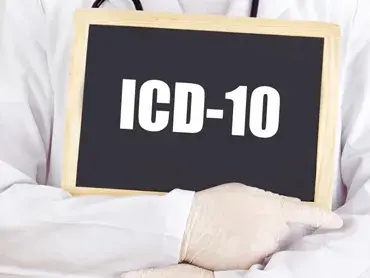With the ICD-10 compliance date fast approaching, many providers and medical coders continue to be plagued by doubts and ambiguities related to the new coding system. It is important that they obtain a clear view regarding ICD-10 and the features that distinguish it, as well as the government’s stand regarding its implementation. Successful ICD-10 implementation demands considerable training and education for clinicians, coders and others within the healthcare system associated with the revenue cycle. Flawless transition to the new coding system also requires specific and adequate documentation to ensure accurate medical coding. Many myths are rampant regarding ICD-10, and these must be worked out to ensure a smooth transition. Below are some of the major myths as well as the actual facts.
- Myth: Medical record content will increase phenomenally.
- Fact: It is true that ICD-10 requires more documentation. However, this will only amount to a few more words for each documented condition. For instance, if the condition is one such as asthma which has different stages, ICD-10 allows documenting and coding each of these stages.
- Myth: ICD-10 codes are all highly complex and comprise 7 characters each.
- Fact: The most common code length is 4 characters, and there are 3 character codes too. It is a more logical system than ICD-9, because the first character indicates the disease category. This enables anyone to understand which disease family the code falls under. Often, one ICD-10 code can signify what multiple ICD-9 codes do. The new coding system reduces possibilities of error while ensuring accurate reimbursement for healthcare providers.
- Myth: Medicaid plans need not switch over to ICD-10.
- Fact: All HIPAA-covered entities including state Medicaid plans will have to switch over to ICD-10. CMS is offering special assistance to help the states with this huge transition. Payers not covered by HIPAA such as Workers’ Compensation, auto and property insurance are also encouraged to become ICD-10 compliant but it is not required at this time. The more specific nature of the codes will only be of more significant value to non-covered entities.
- Myth: The October 1, 2015 ICD-10 compliance date is likely to be extended.
- Fact: All HIPAA covered entities must implement the new ICD-10 code set with dates of service, or date of inpatient discharge , that occur on or after October 1, 2015. HHS has no plans to extend this compliance date.
- Myth: No clinical input is involved in the development of ICD-10.
- Fact: There was a lot of clinical input involved in ICD-10 development and a number of medical specialty societies contributed to its development.
- Myth: ICD-10 is probably out of date since it was developed many years ago.
- Fact: ICD-10 codes have been updated annually since their original development to keep current with advancements in medicine, technology, and the changes in the healthcare environment prior to the implementation of the partial code freeze. As a result of the code freeze, the last regular annual updates were made to both ICD-9 and ICD-10 code sets on October 1, 2011. Limited code updates for new diseases and new technologies were made to both code sets on October 1, 2012; October 1, 2013 and October 1, 2014. On October 1, 2015 only limited code updates for new technologies and new diseases will be made to the ICD-10 code sets. On or after October 1, 2015, no further updates will be made to ICD-9 because it will no longer be used. Regular updates to ICD-10 will resume on October 1, 2016.
- Myth: Super bills based on ICD-10 will not be very useful on account of being too complex/long.
- Fact: ICD-10 based super bills will not necessarily be longer or more complex than ICD-9 based super bills. Both these types of super bills provide all possible code options for many conditions.
- Myth: General Equivalency Mappings (GEMs) were developed to assist in coding medical records.
- Fact: GEMs were not developed to assist in coding medical records. Mapping is not the same as coding. Mapping connects the concepts in two code sets without considering medical record information while medical coding involves assigning the most appropriate codes on the basis of medical record information and relevant coding guidelines and rules. GEMs is used to convert databases such as payment systems, payment and coverage edits, risk adjustment logic, quality measures and a variety of research applications involving trend data from ICD-9-CM to ICD-10-CM-PCS.
- Myth: GEMs have been developed for Medicare use only. So each payer will have to develop their own mappings between the 2 code systems.
- Fact: The GEMs was developed by CMS and CDC for the use of all providers, data users and payers. They are free of charge and available in the public domain.
- Myth: Medically unnecessary diagnostic tests have to be performed to assign an ICD-10 code.
- Fact: ICD-10-CM codes are assigned according to the medical record documentation. In both coding systems, the condition has to be coded to the highest degree of certainty if a diagnosis has not been established. ICD-10 contains many more codes for symptoms and signs than ICD-9. It is designed to better report ambulatory encounters when there is not a known definitive diagnoses. ICD-10 system also has non-specific codes to report conditions where more detailed clinical information is not available.
- Myth: ICD-10-PCS will replace Current Procedural Terminology (CPT).
- Fact: ICD-10-PCS will not replace CPT. It will be used only for facility reporting of hospital inpatient procedures.
You can access CMS’ fact sheet on the International Classification of Diseases, 10th Edition, Clinical Modification/Procedure Coding System (ICD-10-CM/PCS) at http://www.cms.gov/Medicare/Coding/ICD10/downloads/ICD-10MythsandFacts.pdf.



0 Comments